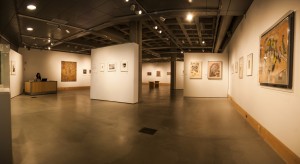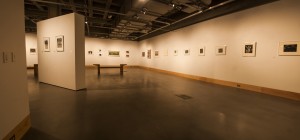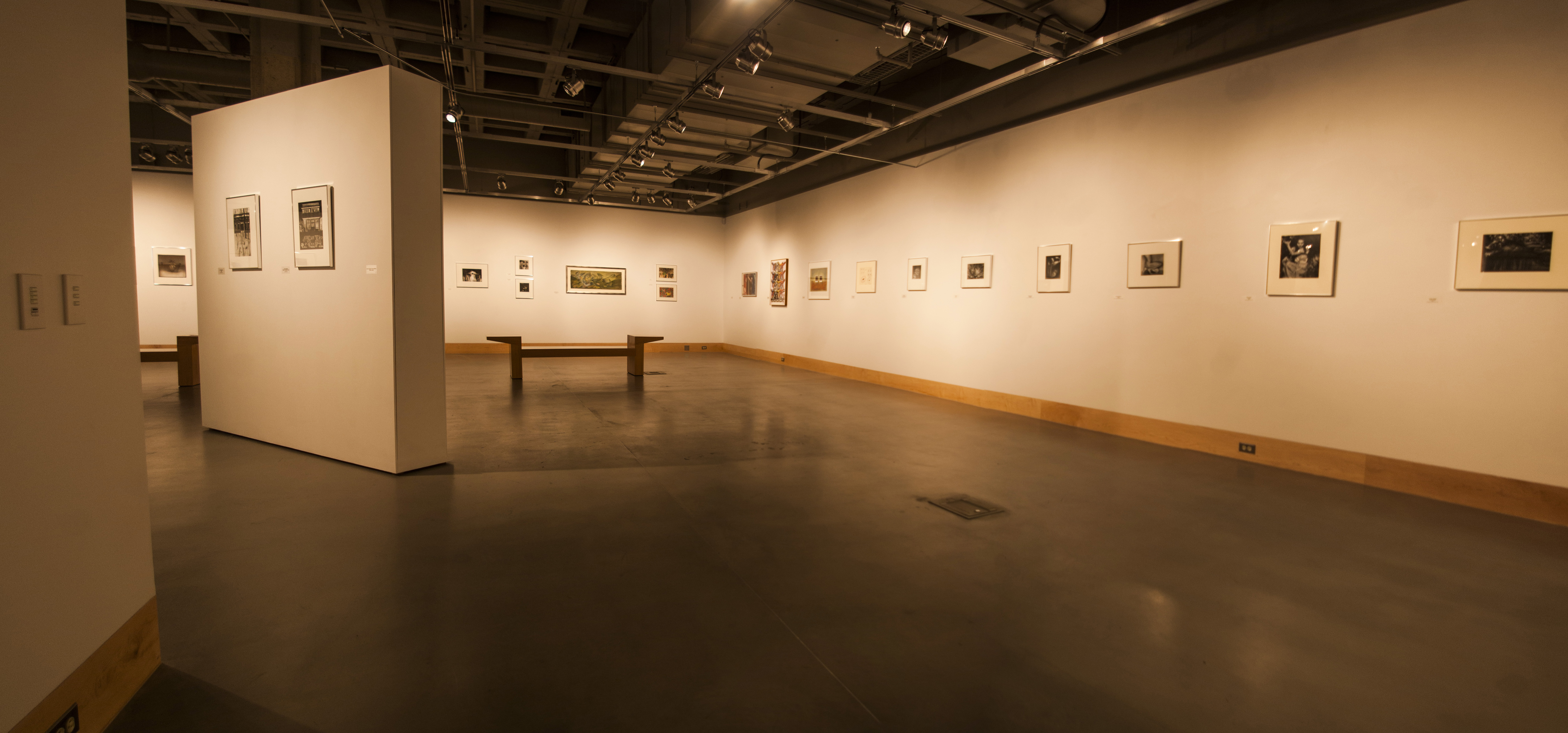Submitted by Ian Riise, Evergreen intern to ThurstonTalk
 The Evergreen State College has collected art for decades and they regularly display work by well known artists in the Evergreen gallery. The current exhibit is entitled “An Abstract – Representational Continuum,” and is made up of photographs, drawings, paintings and sculptures. The college started this collection in the 70’s; a time when many Northwest artists were exploring abstraction. This idea, represented through several mediums and emotions, makes up an exhibit that left me inspired and contemplative when I rejoined the crowd of bustling students.
The Evergreen State College has collected art for decades and they regularly display work by well known artists in the Evergreen gallery. The current exhibit is entitled “An Abstract – Representational Continuum,” and is made up of photographs, drawings, paintings and sculptures. The college started this collection in the 70’s; a time when many Northwest artists were exploring abstraction. This idea, represented through several mediums and emotions, makes up an exhibit that left me inspired and contemplative when I rejoined the crowd of bustling students.
The Evergreen gallery is located to the right of the library main entrance where students are always flowing, preoccupied with academic obligations. This atmosphere makes the current exhibit all the more surreal. The gallery is motionless and the only sound is some music softly echoing through the room. Here you can quickly get away from the hustle and bustle of the daily routine and immerse yourself into some truly enchanting art.
As a photographer, I was most drawn to the work of Ford Gilbreath. His two photos were hand colored from black and white film, giving a dreamy look similar to that of old Technicolor films. Applying this process to the nostalgia-evoking scenes of commuters through a shrouded bus window, and gaudy signs of a cigar shop and cinema brings one back to a world that time has passed by.
Well known photographers Diane Arbus and Edward Weston are included as well. Arbus, who was famous for photographing people she identified as “deviant and marginal,” has a shot of a sword swallower in the middle of displaying her skill and spreading her arms in triumph. Her other photograph is a somewhat unsettling scene of a scrawny boy in the park holding a toy grenade with the most bewildered look on his face. The work of Jerry Uelsmann, a photographer who explored surrealism in the mid-1900’s, shows his skill in creating strange worlds through darkroom editing. Present throughout much of the rest of the photography is the inclusion of water, using reflections to warp the subject matter.
 The photographers aren’t the only influential artists in this exhibit. Among the painters displayed are Guy Anderson; an abstract expressionist from Edmonds, Washington, and Barbara Earl Thomas. Anderson’s paintings mix the idea of abstraction while including a thread to reality that leaves the viewer pondering. The thread here is a human figure drowned in a pool of color. Barbara Earl Thomas’ painting is of specters shrouded in green flames and smoke, a truly haunting yet alluring scene.
The photographers aren’t the only influential artists in this exhibit. Among the painters displayed are Guy Anderson; an abstract expressionist from Edmonds, Washington, and Barbara Earl Thomas. Anderson’s paintings mix the idea of abstraction while including a thread to reality that leaves the viewer pondering. The thread here is a human figure drowned in a pool of color. Barbara Earl Thomas’ painting is of specters shrouded in green flames and smoke, a truly haunting yet alluring scene.
The largest and most eye-catching piece in the gallery is a predominantly orange pastel and acrylic work by Lorri Meschaeret called “Desert Box.” Other bright colors are dabbed amongst the orange background and the piece seems to express the range of colors in a desert sunset.
The most obscure, rough works were the various drawings, all heavily and messily shaded scenes in taverns or on city streets. Some are so sparse that it looks almost like the artists stopped drawing before they were finished, but can remind one of a faded or distant memory, similar to the photos by Gilbreath.
This is the general impression throughout the gallery. Although the artists display a wide variety of mediums, techniques and subjects, they all add a sense of surrealism or detachment from reality. Yet the artists use reality as a starting point, and manipulate it to their creative vision. Some of them combined these mediums in a collage to really create a sense of disconnect.
This gallery is truly dynamic and should provide plenty of interest to most art appreciators. Along with exhibits from professional artists, the gallery also displays student work at the end of the academic quarters. The last day to see the current exhibit is February 6. Check out http://www.evergreen.edu/gallery/home for a complete list of artists included in this presentation, or to learn about past and future exhibitions.




















































